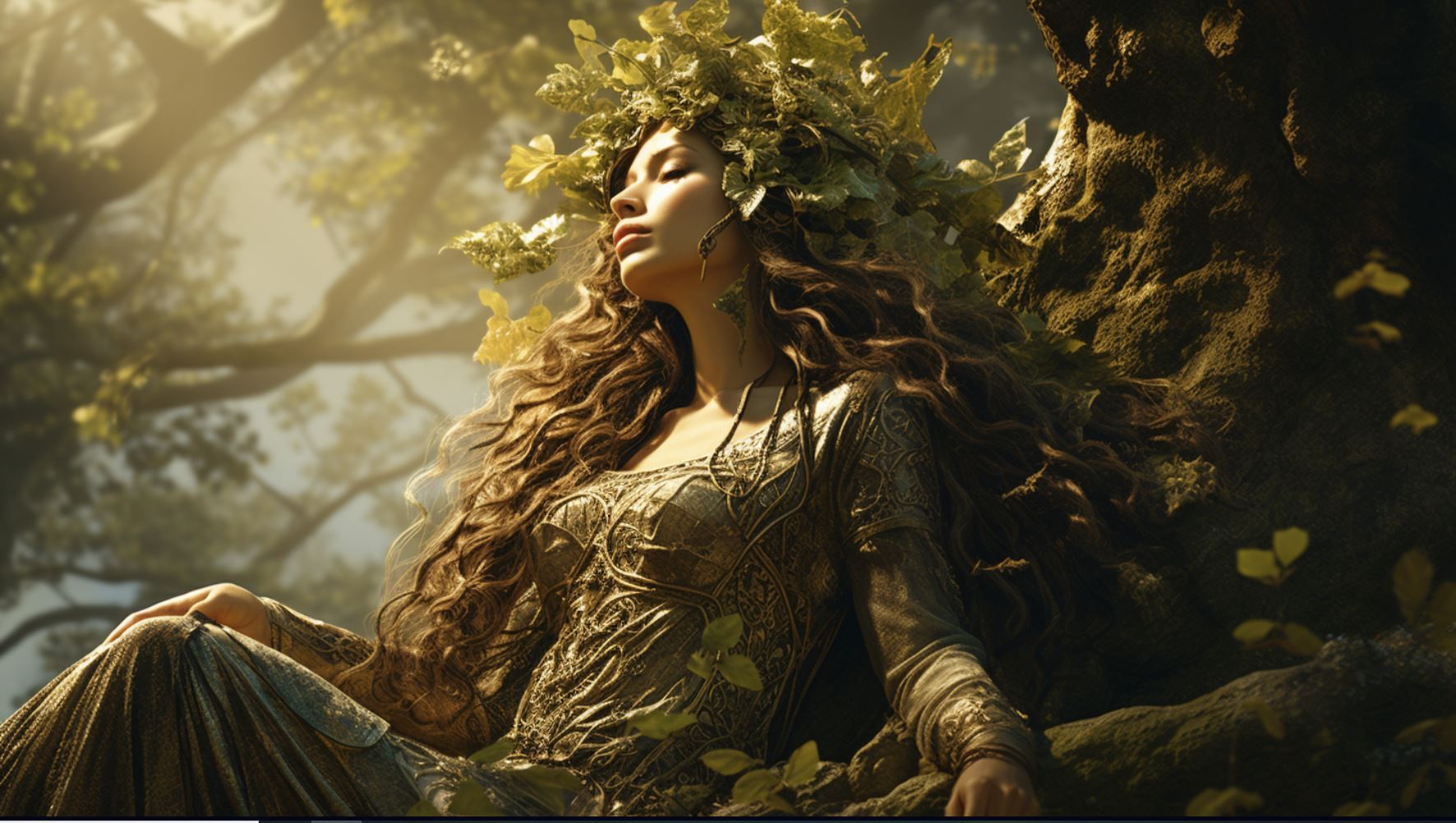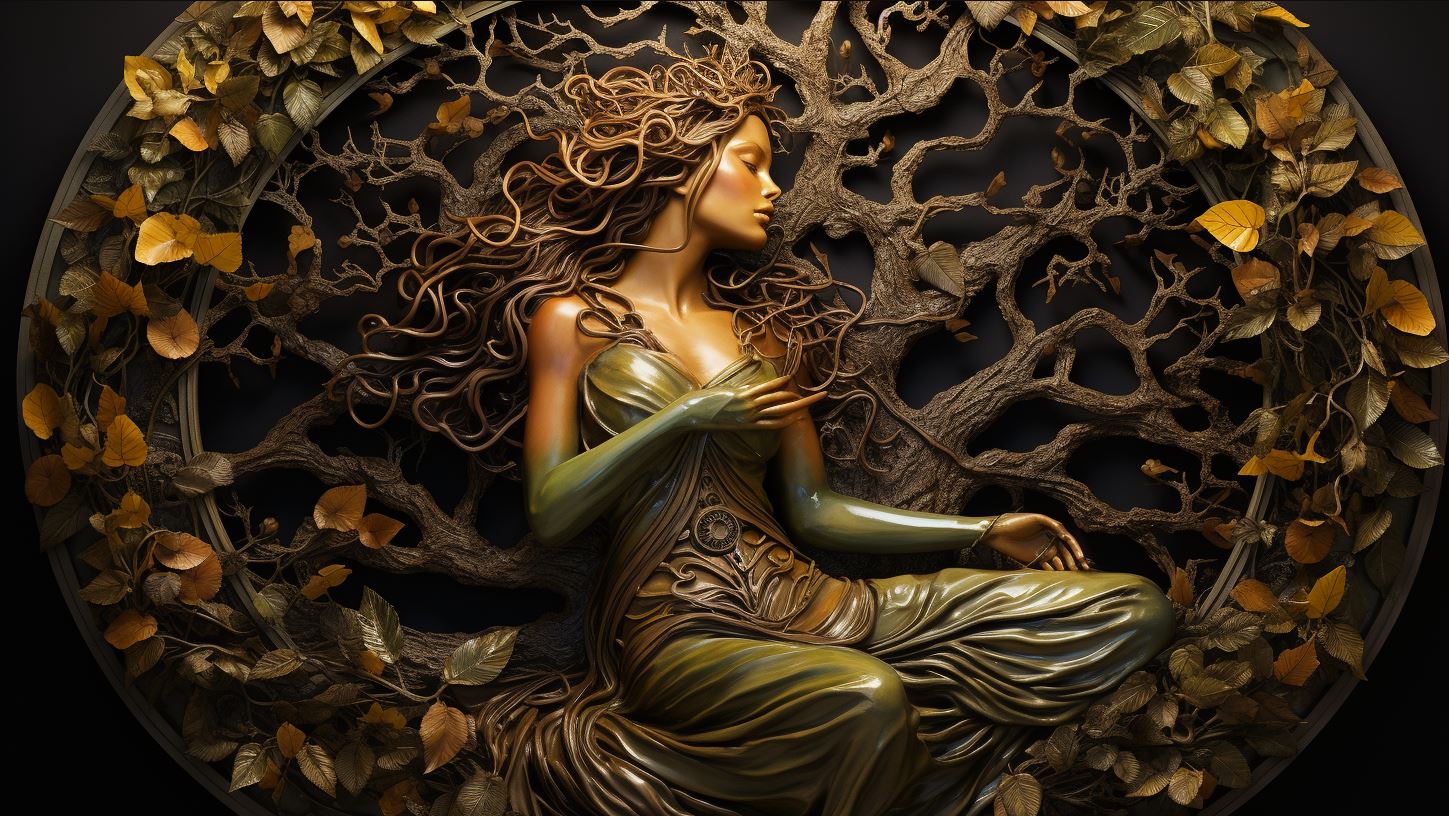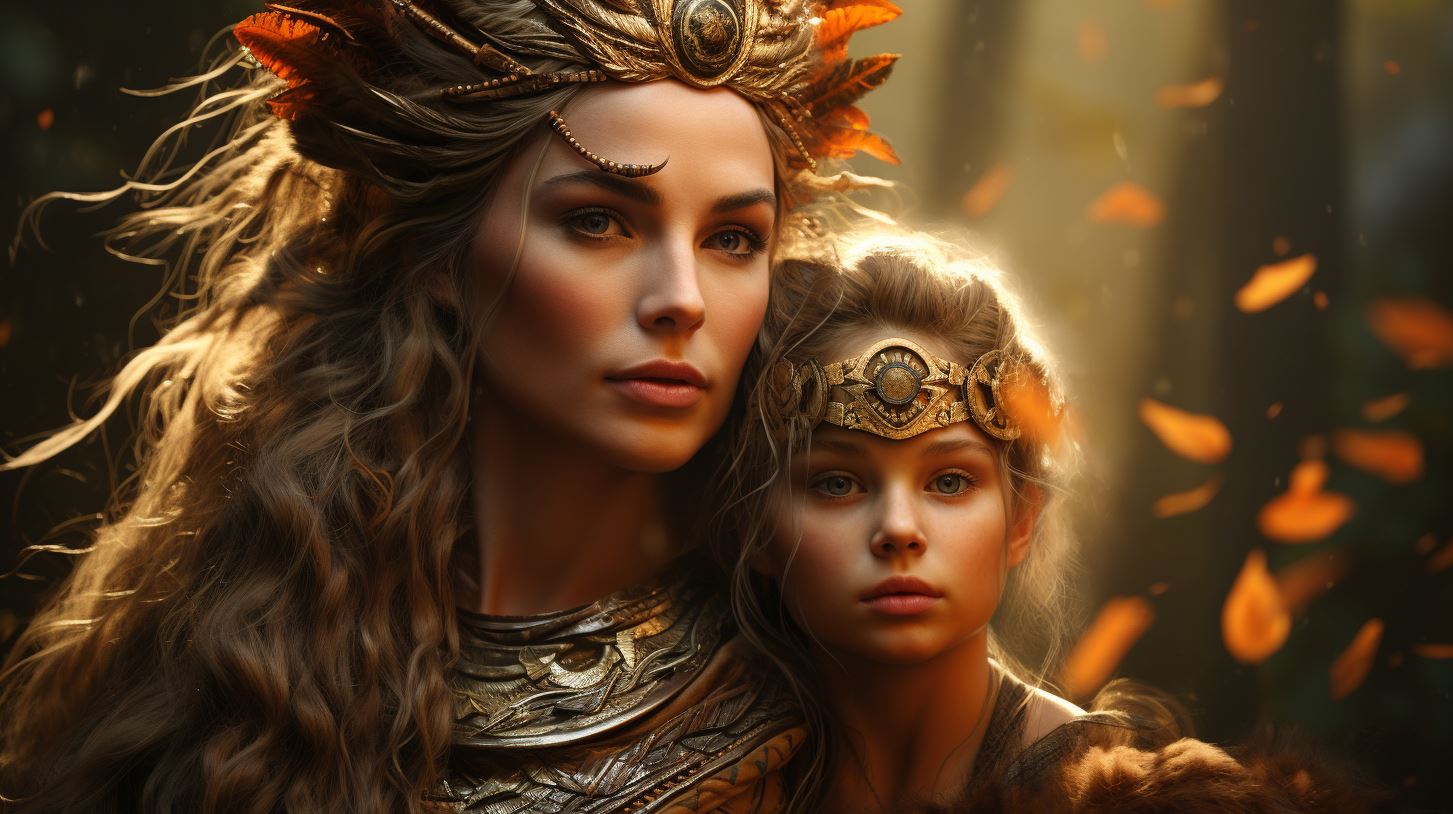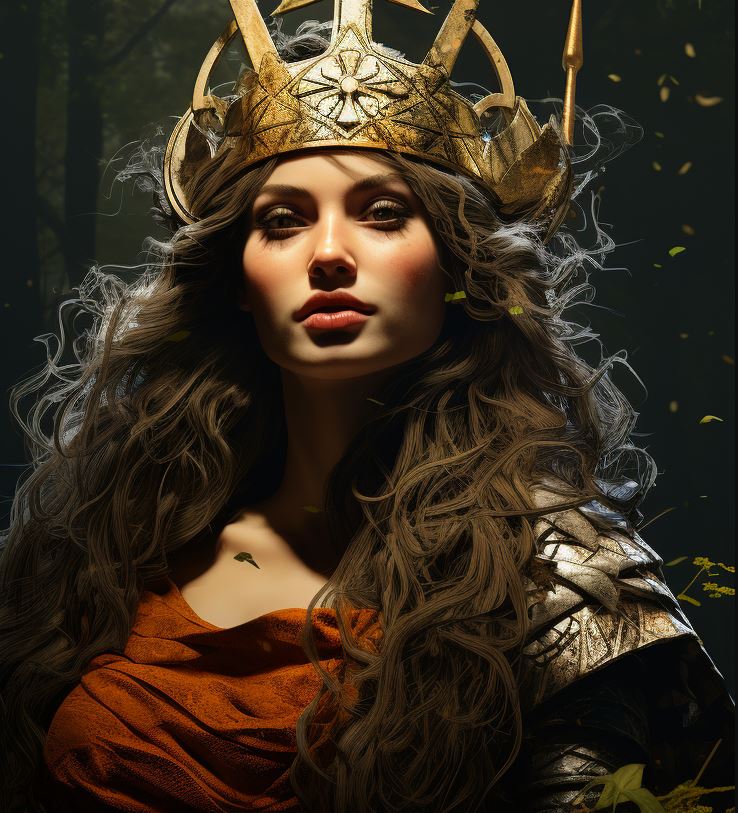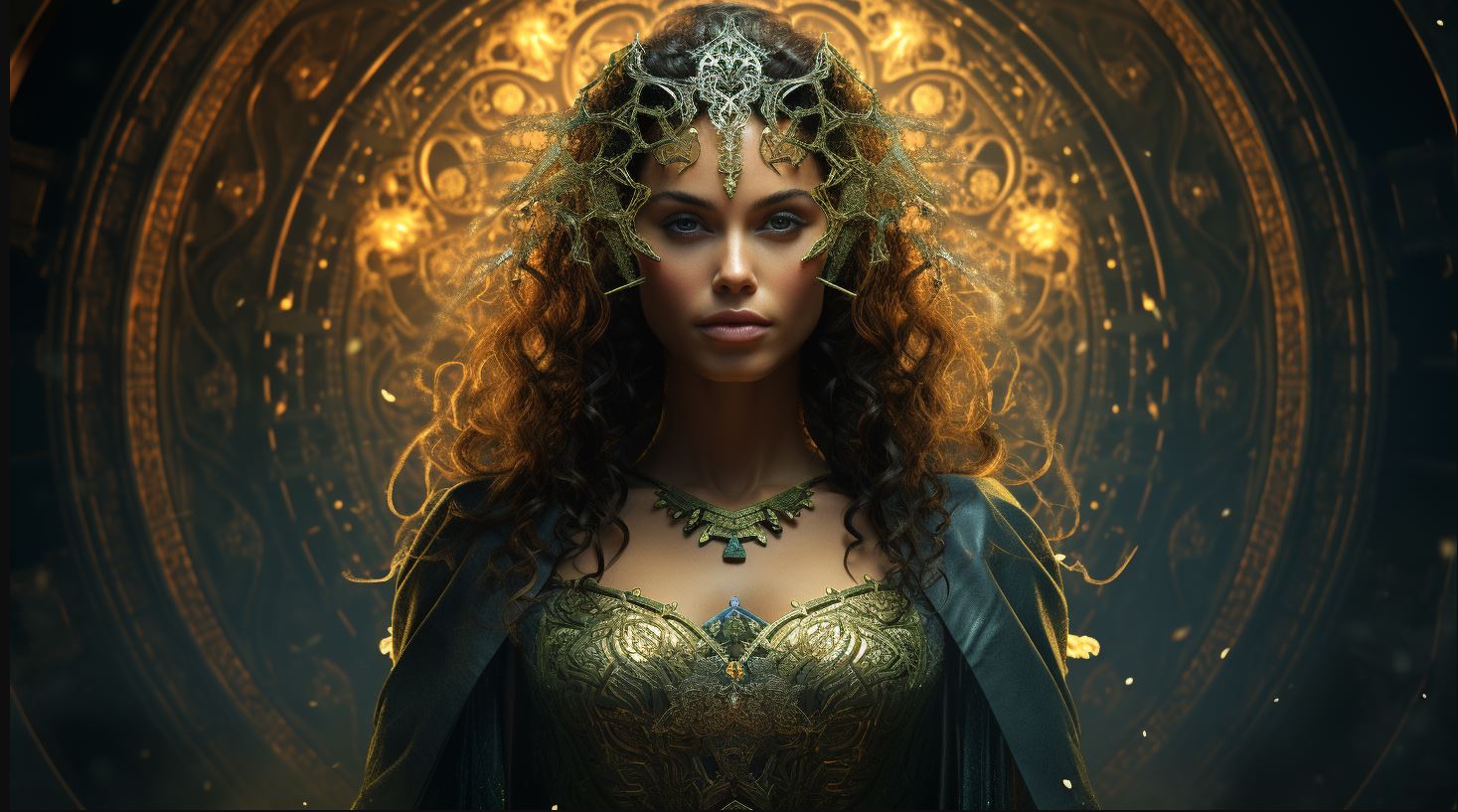Tailtiu Goddess: Unveiling the Myth and Legacy of the Irish Divine

The myth of Tailtiu goddess encompasses her role in Irish mythology and her connection to the festival of Lughnasadh. Tailtiu, associated with agriculture and sovereignty, was the adoptive mother of the god Lugh and initiated the Tailtean Games.
These ancient games showcased athletic, artistic, and craftsmanship competitions. Tailtiu, the last queen of the Fir Bolg, met a sacred death that allowed bountiful harvests. Her legacy influenced the transformation of Lughnasadh and the significance of the sacred site, Tailte.
Tailtiu’s profound impact continues to resonate in Irish culture.
The Myth of Tailtiu Goddess
The myth of Tailtiu goddess is a fascinating tale rooted in Irish folklore and ancient mythology. This section explores the origins of Tailtiu, her significance in Irish mythology, and the lasting legacy she left behind.
From her role as a divine figure to the impact she had on Irish culture, Tailtiu’s story is one of depth and intrigue.
The Origins of Tailtiu
The origins of Tailtiu goddess are shrouded in ancient lore, passed down through generations. According to myth, she was an Irish deity associated with the earth, agriculture, and sovereignty. Little is known about her exact origins, but she was revered for her connection to the land and the abundance it provided.
Tailtiu’s presence was said to bring fertility and prosperity to the people.
Tailtiu and Irish Mythology
In Irish mythology, Tailtiu played a prominent role as the adoptive mother of the god Lugh . She resided on the mystical Hill of Tara in Ireland and was revered as a goddess of great importance.
Tailtiu’s devotion to her son and her commitment to the welfare of the people cemented her place in the pantheon of Irish deities. Her nurturing nature and association with the land made her a symbol of fertility and agricultural abundance.
The Legacy of Tailtiu
Tailtiu’s legacy extends far beyond her role as a mother and goddess. The impact of her existence and actions reverberated throughout Irish mythology and society. One of her most notable contributions was the creation of the Tailtean Games, a series of athletic, artistic, and craftsmanship competitions held during the Lammas festival.
These games became a celebrated tradition, embodying the spirit of Tailtiu’s passion for excellence and showcasing the talents of the Irish people.
As the last queen of the Fir Bolg, Tailtiu’s death became a sacred ritual, marking the transition of power in ancient Ireland.
Her passing was mourned, but it also symbolized the cycle of life, death, and rebirth in nature. It was believed that her sacrifice allowed the fields to flourish, ensuring an abundant harvest and sustenance for the people.
Tailtiu’s legacy as a great mother and goddess of the land continues to influence Irish culture to this day. Her name lives on in the sacred site known as Tailte, a place that holds deep spiritual and historical significance.
The myth of Tailtiu goddess serves as a reminder of the power of nature, the importance of fertility, and the enduring legacy of a divine figure in Celtic mythology.
The Festival of Lughnasadh
Centuries ago, the celebration of Lughnasadh marked an important milestone in the agricultural calendar and Irish traditions.
This festival, deeply intertwined with the myth of Tailtiu, held great significance for the ancient Irish communities.
The Significance of Lughnasadh
Lughnasadh, also known as Lammas, signaled the beginning of the harvest season, when the fruits of labor ripened and were ready to be gathered. It represented a time of gratitude, abundance, and communal gathering, as communities came together to celebrate the bountiful yield of the land.
Tailtiu’s Connection to Lughnasadh
While Lughnasadh primarily became associated with the god Lugh over time, its origins can be traced back to the goddess Tailtiu. As the mother of Lugh, Tailtiu’s role was intricately linked to the festival.
It was she who fostered the creation of the Tailtean Games, a testament to her love for her adopted son and the importance of athletic and cultural competitions.
Rituals and Traditions of the Festival
During Lughnasadh, various rituals and customs were carried out to honor Tailtiu and celebrate the harvest.
One prevalent tradition involved the lighting of bonfires, representing the power of the sun and its contribution to agricultural abundance. These fires symbolized purification and were believed to bring blessings for the coming year.
Communal feasting was an essential part of the festival, where the freshly harvested crops were shared among the community. The grain, vegetables, and fruits served were a testament to the abundance of the land and a reminder of Tailtiu’s nurturing spirit as the goddess of agriculture.
The festivities also included lively music, storytelling, and dancing to celebrate the joyous occasion. People would gather to showcase their artistic talents, engaging in poetic competitions, song and dance performances, and storytelling contests.
The Tailtean Games, originally established by Tailtiu, were an integral part of the festival. These games encompassed diverse competitions, ranging from athletic feats to craftsmanship skills, showcasing the talents and abilities of the Irish people.

Additionally, Lughnasadh became a time to settle disputes and establish peace. It was customary for factions to declare truces and cease hostilities during the festival, emphasizing the importance of unity and harmony within the community.
The Games of Tailtean
The Tailtean Games were a significant aspect of the ancient festival of Lughnasadh, honoring the goddess Tailtiu. These games, held in Ireland for over a thousand years, encompassed a diverse range of athletic competitions, contests, and artistic displays.
Introduction to the Tailtean Games
The Tailtean Games were a grand celebration that took place during the summer season. They were named after the goddess Tailtiu, who played a crucial role in their establishment. These ancient games had a profound cultural and social impact, showcasing remarkable skills and fostering a spirit of competition.
Athletic Competitions and Contests
The Tailtean Games were marked by a series of rigorous athletic competitions that showcased the strength, agility, and prowess of participants. Contestants engaged in sports such as hurling, chariot racing, wrestling, and archery.
These competitive events not only entertained the spectators but also honored the physical abilities of the participants.
Artistic and Cultural Displays
In addition to athletic contests, the Tailtean Games featured a vibrant display of artistic and cultural performances. Musicians, poets, dancers, and storytellers gathered to entertain the crowds and showcase their talents.
Craftsmen and artisans exhibited their creations, including intricate jewelry, fine weaponry, and exquisite artwork, offering a glimpse into the rich artistic traditions of the time.
The Games of Tailtean served as a platform for individuals to exhibit their skills and talents, fostering a sense of community and pride.
These festivities provided a valuable opportunity for people to come together, celebrate their culture, and honor the legacy of Tailtiu, the goddess of the land and fertility.
Tailtiu – The Mother and Queen
The role of Tailtiu as a mother figure holds significant importance in Irish mythology.
As the adoptive mother of the god Lugh, Tailtiu displayed nurturing qualities that shaped his character and destiny. Her tender care and guidance during his upbringing established the foundation for Lugh’s future accomplishments.
Tailtiu’s Role as a Mother
Tailtiu’s devotion and love for Lugh were unparalleled. She provided him with a nurturing environment, imparting wisdom and instilling the values necessary for his future role as a leader and protector.
Tailtiu’s unconditional love and support played a vital part in shaping Lugh’s character, making him the revered figure he became.
Tailtiu’s Influence on Sovereignty
As a goddess associated with sovereignty, Tailtiu held a position of immense power and influence. Her presence symbolized the fertile lands and abundance provided by nature. Through her association with the agricultural cycle, Tailtiu conveyed the importance of land, nourishment, and prosperity for the well-being of the people and the stability of the kingdom.
Legacy of Tailtiu’s Reign
Tailtiu’s reign as the last queen of the Fir Bolg left an enduring legacy. Her sacred death was seen as a sacrifice that allowed the bountiful crops to flourish, ensuring the survival and prosperity of the people.
The rituals and traditions associated with her reign continue to be passed down through generations, reminding the Irish people of Tailtiu’s sacred role as a nurturing mother and revered queen.
Tailtiu’s Legacy and Impact
As we delve into the legacy of Tailtiu, it becomes evident that her influence extends far beyond her role as the mother of Lugh and the creator of the Tailtean Games.
Her impact had a profound transformation on the festival of Lughnasadh, the significance of the sacred site of Tailte, and the broader scope of Irish culture.
The Transformation of Lughnasadh
Lughnasadh, initially dedicated to Tailtiu, underwent a gradual transformation over time. While still connected to the celebration of the first harvest, it became more closely associated with the god Lugh. However, Tailtiu’s presence is felt throughout the festival, symbolizing the cyclical nature of life, death, and rebirth.
Her role as the nurturing mother and her sacrifice for the bountiful crops remind us of the interconnectedness between humans and the land.
Tailte – The Sacred Site
Tailte, the sacred site where the Games of Tailtean took place, holds immense significance in Celtic mythology. It serves as a lasting tribute to Tailtiu, immortalizing her contributions to Irish society.
This hallowed ground witnessed the grandeur of the athletic competitions, artistic displays, and cultural events that celebrated the goddess’s legacy. Tailte remains a cherished symbol of heritage and a reminder of the deep roots of Irish traditions.
Tailtiu’s Influence on Irish Culture
Tailtiu’s influence extends beyond the realm of mythology and festivals. As the Great Mother and Goddess of Sovereignty, her legacy shaped notions of power, land, and the interconnectedness of people. Her devotion to agriculture and the nurturing of the land has had a lasting impact on Irish farming traditions and the appreciation for nature’s abundance.
Tailtiu’s sacrificial death symbolizes the cycle of life and the importance of sustenance, weaving her into the tapestry of Irish culture.
Today, Tailtiu’s legacy and impact continue to inspire and resonate with the people of Ireland.
Her story serves as a reminder of the deep connection between humanity and the natural world, reflecting the timeless wisdom embodied by the goddess herself.
.











